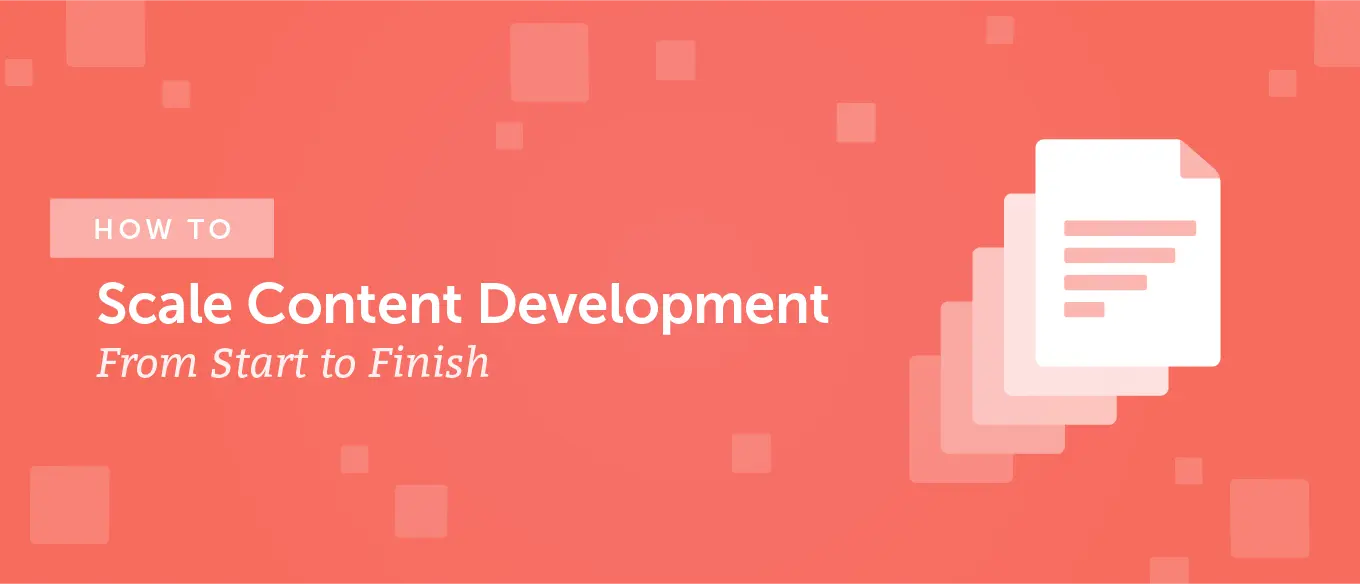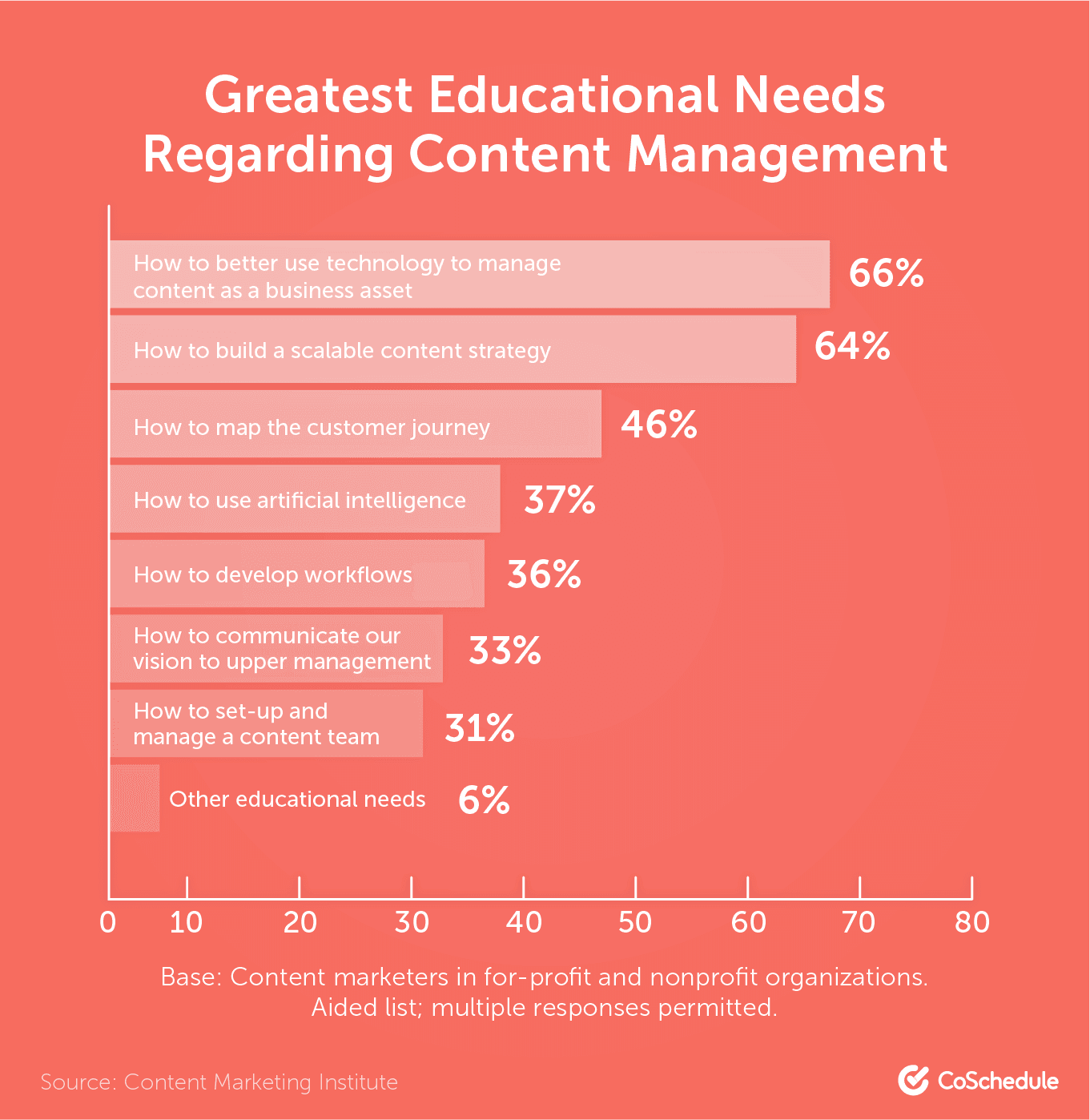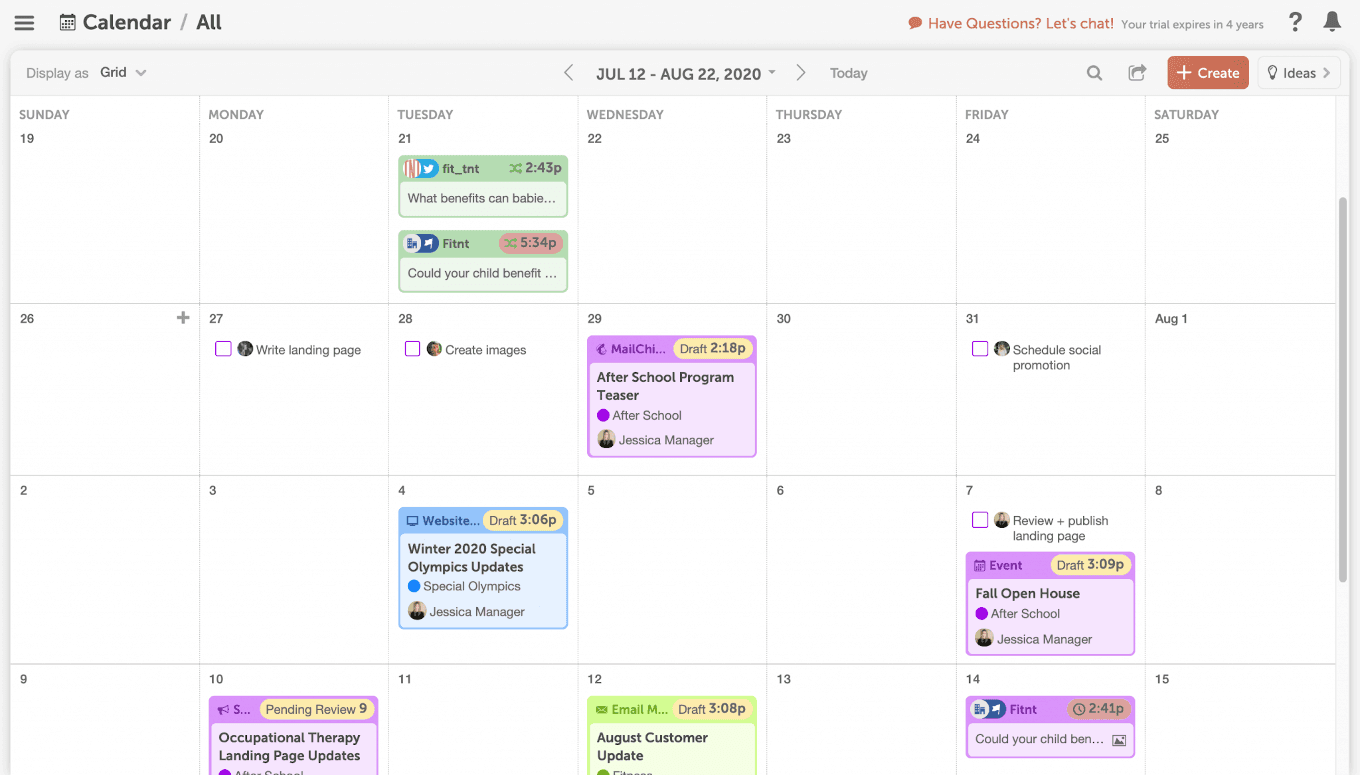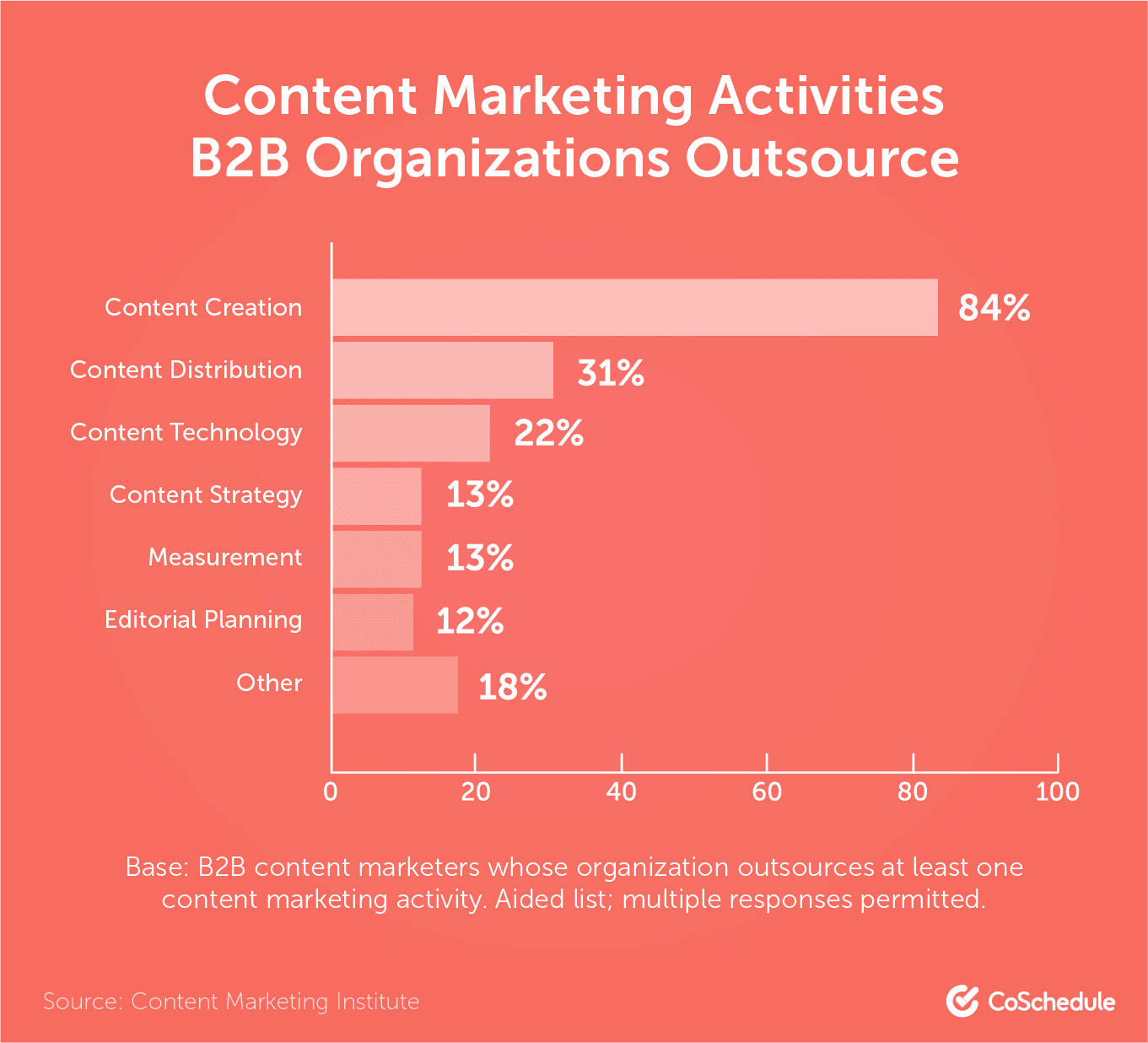How to Scale Content Development From Start to Finish
 Content marketing is a very crucial element for any blogger or company that wants to establish a strong online presence. For content marketing to work for you, however, you need to consistently produce high quality content on a regular basis — a few blog posts a year won’t do it for you.
For most businesses, producing great content on a regular basis is a huge challenge. A lot of the time, bloggers and businesses find themselves having to make a trade between quality and quantity. Either produce few, high-quality content or lots of lower-quality content.
Content marketing is a very crucial element for any blogger or company that wants to establish a strong online presence. For content marketing to work for you, however, you need to consistently produce high quality content on a regular basis — a few blog posts a year won’t do it for you.
For most businesses, producing great content on a regular basis is a huge challenge. A lot of the time, bloggers and businesses find themselves having to make a trade between quality and quantity. Either produce few, high-quality content or lots of lower-quality content.
How to scale content development from start to finish.
Click To Tweet What if you could get the best of both worlds — producing a high quantity of high quality content — without neglecting other aspects of your business?
With the right approach, it is possible to consistently produce tons of content without compromising on quality.
In this article, I will show you the exact process that we used to scale our content development at Cleverism.com and Founderjar.com and turn both of these blogs into content engines that consistently attract tons of traffic.
What if you could get the best of both worlds — producing a high quantity of high quality content — without neglecting other aspects of your business?
With the right approach, it is possible to consistently produce tons of content without compromising on quality.
In this article, I will show you the exact process that we used to scale our content development at Cleverism.com and Founderjar.com and turn both of these blogs into content engines that consistently attract tons of traffic.
- Why Do You Want to Scale Your Content Development?
- Step-By-Step Approach on How to Scale Your Content Development
- Create a Plan for Your Content for the Next 4–6 Months
- Break Down the Content Development Process
- Decide on What Steps to Outsource
- Find and Hire Freelancer(s) to Help You Scale Your Content Development
- Start Scaling Your Content Development
Why Do You Want to Scale Your Content Development?
Scaling your content development will help your business in multiple ways.Grow Your Audience
If you want to grow your audience, you need to consistently create new content. The more high quality content you produce, the more people you attract to your business. Scaling your content development allows you to efficiently create lots of high quality content, which, in turn, gives you more opportunities to grow your audience. In addition to growing your audience, scaling your content development also allows you to retain this audience. When you are constantly updating your blog with fresh content, your audience has a reason to come back to your blog.Win More Clients
Great content is a very effective tool for attracting, engaging, nurturing, and converting visitors into buyers. High quality content puts you in front of people who are struggling with problems that your business can solve. Good content also provides your audience with information that they need to make an educated purchase decision and ultimately gets them to purchase from you. One thing to keep in mind here is that all your content should provide value to the readers. While you can pitch your products and services within your content, don’t make it the main objective of your content. If all your content sounds like an advertisement, you’ll put your readers off.Boost Your SEO
Publishing more content adds more pages to your blog that can be indexed by search engines. Provided that you’re publishing high-quality content and your content is properly optimized for search, this can improve your chances of ranking higher in SERPs.Create Space for Development of New Products
Scaling your content development also creates free space that you can use to develop new products. For instance, when we scaled our content production at Cleverism.com, I outsourced the actual content creation to trusted freelancers. This gave me time to focus on creating the online courses that we sell on the blog, all while producing more content than we did before. You can make money from your blog by creating and selling products, like online courses, webinars, niche job boards, SaaS software, digital products, and so on.Step-By-Step Approach on How to Scale Your Content Development
Here are the exact steps we followed to scale our content development.Step 1: Create a Plan for Your Content for the Next 4–6 Months
One mistake a lot of bloggers make is creating content on a post-by-post basis. They only think about what to write next after they have published the last post. This is a recipe for failure. Creating content on a post-by-post basis usually leads to lots of stress. You’ll often find yourself with absolutely no idea on what to write — even if you do, there’s a high chance you’ll rush through the project, resulting in low quality content. If you have a content development team, this becomes even more stressful, because you will be assigning projects to your team at the very last minute. To avoid all this stress, you need to create a content plan for the next couple months. Here are a couple of reasons why you need to plan for 4–6 months of content in advance.- You don’t have to worry about what to write and when. Your content plan shows all the content that needs to be created, and the date it should be published.
- Everyone in the team has a good idea of what content is coming up, and the person responsible for every aspect of developing the content.
- It holds you accountable. When you have a definite date on your calendar when a piece of content needs to be published, you will work hard to ensure that the content is ready before then. Without a plan, you have no deadlines — leading to inconsistent publishing.
- A content plan allows you to prepare for seasonal opportunities in advance. For instance, when creating your calendar for the year, you can come up with ideas on what to post during the December holidays. While other bloggers plan their December content in December, you’ll be way ahead.
Creating content on a post-by-post basis usually leads to a lot of stress, but you can avoid the stress by creating a content plan.
Click To TweetDefining Goals
We start by identifying the goals we want to achieve with our content. The goal for your content could be:- Driving traffic
- Generating leads
- Increasing conversions
- Boosting brand awareness
- Educating your potential customers
Identifying the Target Audience
Next, we define the audience in which we are creating content. Here, we create a highly specific audience persona. Some of the things we include in our audience persona include:- Who are we targeting (both demographic and psychographic details)?
- What kind of content do they prefer?
- What are their biggest pain points?
- Where do they spend their time online?
- What informs their purchase decisions?
Keyword Research
Once we have defined our audience, the next thing we do is research the best keywords to target. This allows us to identify the topics our audience is interested in and create content that is properly optimized for search engines.Coming Up With Topic Ideas
Armed with the keywords we want to target, we then come up with a list of topic ideas that we want to cover in our content. Here, we come up with topic ideas that are enough to take us through 4–6 months of regular publishing. The ideas are based on what our target audience is interested in, as well as our goals for the content. Here is our rough list of the broad topic categories we have started for Founderjar. In the next step, we detailed the list with roughly 70–80 topic ideas — calculating about three topics per week for the next six months.
In the next step, we detailed the list with roughly 70–80 topic ideas — calculating about three topics per week for the next six months.
Developing a Content Calendar
Finally, we use a content calendar to keep track of our content and ensure that each piece of content is published on time. In your content calendar, you can include some of the following columns:- Article topic
- Targeted keyword
- Targeted audience persona
- Stage of the sales funnel
- Content format
- Person responsible for the content
- First draft due date
- Publishing date
- Promotion channels

Step 2: Break Down the Content Development Process
Another thing I have noticed with a lot of bloggers and marketers is that they treat content creation as a single step. In actual sense, the content creation process consists of several small steps. Thinking of the content creation process as a single step might work when you are doing everything by yourself. When you want to scale your content development, however, you will need to outsource some aspects of your content development. In this case, thinking of the entire process as a single step becomes unworkable. Breaking down the content creation process into multiple steps is important for two reasons. First, it allows you to assign different stages of the content development process to different team members.- Topic Definition: The purpose of this step is to come up with the main topic for a particular piece of content. When defining the topic, you should think about the main concept that will be covered in the content, the audience that the content is targeting, and the key thing that the reader will learn after consuming the content.
- Keyword Research: Here, you are going to identify the long tail keywords that you are going to target with this content. Generally, you should aim for long tail keywords with significant search volume and a relatively low level of competition. You should also research other secondary keywords that you can target in addition to your main keyword.
- Outline Preparation: After defining the topic and identifying the keywords to target, the next step in the content development process is to prepare an outline. The outline sketches out the key ideas that the piece of content is going to cover. This step is important because it helps keep you organized when writing the content and makes sure that the piece of content flows in a logical manner. The outline is also very important if you are going to be outsourcing the writing. It ensures that the content creator doesn’t leave out important ideas and concepts when creating the post.
- Post Writing: This is the stage where the actual writing takes place. In most cases, this is the step that takes the most time.
- Images/Illustrations: Illustrations, in general, make the content more digestible for any reader. If the content requires some images or illustrations, these will be done at this point. There are generally two major versions: a blog creates its own unique illustrations consistently designed, or a blog takes existing illustrations and provides a credit for them. In the first case, a designer is needed to develop such illustration content (Canva might be an alternative). In the second case, a knowledgeable virtual assistant can help with such illustrations.
- Editing: Good content creators know that the first draft of a piece of content is never perfect. This is why you need to edit your blog posts. The aim of this stage is to get rid of any spelling and grammatical errors, make sure that the article flows nicely, get rid of parts that do not add value to the content, make sure the content is properly formatted, and so on.
- Publishing: This is the stage where the final draft is published. The piece is now available for consumption by your audience.
- Promotion: A lot of bloggers stop at the publishing stage. However, it makes no sense to spend time creating a post if no one is going to see it. In the promotion stage, this is where you spread word about your content and get your audience to read it.
Step 3: Decide on What Steps to Outsource
Outsourcing is a very important aspect when it comes to scaling your content development. If you are doing everything yourself, there’s only so much you can do. When you outsource, however, you are basically getting more people to help you with your content development efforts, which means that you’ll be able to produce more high-quality content in less time. According to the 2020 B2B Content Marketing Report by the Content Marketing Institute, 50% of content marketers outsource some of their marketing activities. The most outsourced marketing activity is content creation, with over 80% of marketers outsourcing their content creation. Just because you are outsourcing, however, doesn’t mean that you should leave every aspect of your content development to outsiders. The key to effective outsourcing is to outsource the parts that take a lot of time but don’t need a lot of input.
When creating content for Cleverism.com and Founderjar.com, we handle topic definition, keyword research, outline creation, and a part of post writing. We outsource another part of post writing and all of editing and illustration to freelancers. Once a piece of content has been created, we also handle publishing and promotion by ourselves.
Since writing, editing, and illustration are the most intensive aspect of the content development process, outsourcing them allows us to save time while still producing lots of content.
At the same time, by handling topic definition, keyword research, and outline preparation, we are still able to maintain control over our content and ensure that all the content is in line with our content marketing strategy.
Here is a short snippet of our editorial calendar, where you can see what we sent and how we keep track of it:
Just because you are outsourcing, however, doesn’t mean that you should leave every aspect of your content development to outsiders. The key to effective outsourcing is to outsource the parts that take a lot of time but don’t need a lot of input.
When creating content for Cleverism.com and Founderjar.com, we handle topic definition, keyword research, outline creation, and a part of post writing. We outsource another part of post writing and all of editing and illustration to freelancers. Once a piece of content has been created, we also handle publishing and promotion by ourselves.
Since writing, editing, and illustration are the most intensive aspect of the content development process, outsourcing them allows us to save time while still producing lots of content.
At the same time, by handling topic definition, keyword research, and outline preparation, we are still able to maintain control over our content and ensure that all the content is in line with our content marketing strategy.
Here is a short snippet of our editorial calendar, where you can see what we sent and how we keep track of it:
 You don’t have to necessarily outsource the same steps that we do. You just need to figure out what you are comfortable doing yourself, and what you can outsource to make your content development process more efficient.
You don’t have to necessarily outsource the same steps that we do. You just need to figure out what you are comfortable doing yourself, and what you can outsource to make your content development process more efficient.
Step 4: Find and Hire Freelancer(s) to Help You Scale Your Content Development
Once you have identified what steps of the content creation process you are going to outsource, you can now go ahead and find and hire freelancers to handle these steps for you. Some of the platforms you can use to find and hire freelancers for each step of your content development process include:- Upwork: Being the world’s largest freelance marketplace, Upwork gives you access to a large pool of freelancers. You can use Upwork to hire freelancer writers, graphic designers to create illustrations for you, and even content marketers who can develop a content strategy for you.
- Guru: This platform is quite similar to Upwork in that you’ll get access to a large pool of freelancers. Additionally, Guru comes with a project management tool that makes it quite easy to manage your content projects. You can hire writers, designers, and content strategists.
- ProBlogger Job Board: This is a premium job board hosted on ProBlogger. While the ProBlogger Job Board does not have as many freelance writers as Upwork and Guru, you are guaranteed of high quality writers with tons of experience. However, to access the writers on the ProBlogger Job Board, you have to pay a fee to post your job ad.
- Contently: This is an agency that connects businesses with freelancer writers. All the writers on Contently are vetted before being allowed to work on the platform, so you are guaranteed to find high quality writers on the platform. It’s good to note that Contently is quite expensive compared to other platforms, like Upwork and Guru.
- 99Designs: This is a freelance marketplace that links businesses to designers. 99Designs is a great place to find skilled designers to handle the visual aspects of your content development. Being a designers-only platform, you won’t find other kinds of freelancers here.
- Fiverr: This is a great platform if you are looking to hire freelancers at a low cost. Like the name suggests, most freelance services here start at just $5, though the price will go up due to various add-ons. You can use Fiverr to hire freelance writers, designers, and content strategists.
- Check the rating and reviews: Most freelance platforms have a system for rating freelancers based on work they have done for past clients. These platforms also provide a system for clients to leave reviews of freelancers they have worked with.
- Ask for a portfolio or samples: Just because a freelancer has a good rating and reviews, it doesn’t necessarily mean that they are the right one for you. The best way to know if a freelancer is suitable for you is to ask for their portfolio or samples. This allows you to check work they’ve done before and determine if their style will work for you.
- Watch out for good communication skills: Never hire a freelancer who has poor communication skills. Poor communication skills, not seeking to understand what exactly you need, and long response times should be treated as red flags. Working with such freelancers can lead to a lot of stress.
- Check rates: While you definitely want to save money when hiring freelancers to help you with content creation, don’t always go for the cheapest freelancer you can find. Very often, very low prices go hand-in-hand with low quality work (i.e. you get what you pay for).
- Start a trial: For almost any task, you can define a small trial task and see how satisfied you would be with the result. Obviously, if the performance is very good, then give a bigger task.
- Check attitude: Another aspect I check rather subconsciously when selecting a freelancer, is how inquisitive a person is. If a person is eager to learn, then you can see that it can be a long-term collaboration (which I, personally, totally prefer).
Step 5: Start Scaling Your Content Development
After hiring skilled and reliable freelancers, it’s time to get to work and turn your blog into a content generation machine. To do this successfully, you need to lay the necessary groundwork that will help your freelancers produce the right kind of content efficiently. Here are some of the things you need to do in order to keep producing high quality content consistently. Create Clear Guidelines and Instructions One of the most frustrating things when working with freelancers is to have them do a project for you, only to realize that what they delivered and what you expected are two totally different things. Such situations arise due to vagueness in outlines. To avoid such situations, you should always develop very clear guidelines when assigning work to a freelancer.To avoid debilitating communication between you and your freelance writer, you should always develop very clear guidelines when assigning work.
Click To Tweet- The topic
- The audience
- Any key points you want them to cover
- Content length
- Formatting guidelines
- Content tone
- Use of multimedia


